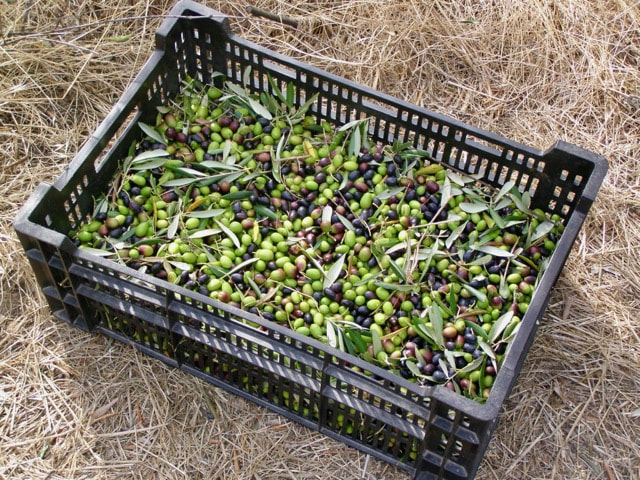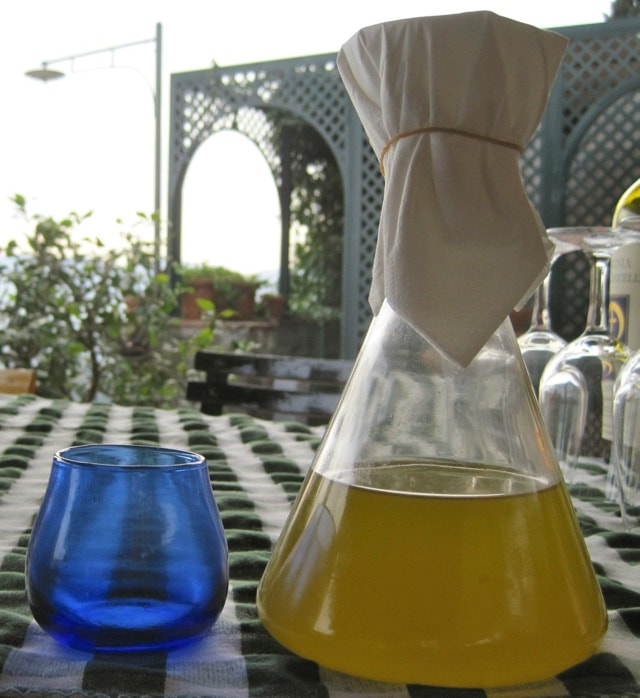|
I’m sitting round Franca’s kitchen table, already populated by her husband Peppe, their married son Marco, and Carlo, a builder and work colleague of Peppe’s. Carlo, always jolly and looking well-fed, observes with a sly smile that you can buy ‘extra-virgin olive oil’ in the supermarket for €1,80 a litre. He pauses for dramatic effect, and Franca, taking the bait, says she pays €8; she looks uncertain about admitting she may have been cheated. Carlo immediately supports her. ‘Of course it’s not extra-virgin. How could anyone produce extra-virgin olive oil at that price? You can’t believe it just because it’s written on a label. The cheap stuff is made from the remains of the first cold pressing by adding chemicals and heating it up to extract more oil. It doesn’t have any aroma or flavour at all.’ Franca looks relieved; she buys hers from a woman who comes to the village every year with her new olive oil. She doesn’t even ask to taste it anymore, because after so many years she trusts the woman to supply oil she knows she likes. But if you want to taste oil, Carlo’s recommendation is that you toast a piece of bread and drizzle it with oil while it’s still warm, thus releasing the aroma and flavour of the oil. Franca and I favour pouring a little puddle in our palms and leaving it to warm before slurping it up while also sucking in some air. At olive oil tastings I’ve been given oil in a little plastic cup to warm in one hand with my other covering the cup to keep in the perfumes that are released by the warmth of your hand. Before smelling, you position your nose close to the cup and when you remove your hand, you’re hit by the pungent odour of crushed olive — or not, if it’s a poor oil. Besides the synthetic oil, Carlo’s bad category includes oil that burns your tongue, which in his opinion includes Lucca oil. One of his favourites is a mellow oil from Montecatini. Here I disagree. I love the early oil pressed from olives harvested in October on the Lucca plain, peppery on the tongue and a little bitter at the back of the throat. Carlo insists, ‘The olives have to be completely ripe, black. Then the oil is sweet and mellow. The best is from Genova.’ I’ve tasted Ligurian oil and agree its delicate flavour is well suited to the fish that forms a large part of the diet in that coastal region just to the north of us. Even the Genovese basil is more delicately flavoured than our Tuscan variety, and no self-respecting LIgurian would make pesto from our hard-hitting leaves. We finally agree it’s all a matter of individual taste — ‘a ciascuno il suo’. Walking home, I reflect that my sophisticated oil-producing friends stereotype old farmers, who harvest their olives from late November onwards when they’re fully ripe, as ignorant or greedy. They’re only simple peasants who wrongly believe they’ll get more oil from riper olives and care nothing about the flavour. It never occurs to modish followers of fashion that their traditional neighbours may have just as well-developed palates, and after analysing the old and the new flavours, decide that what they’re used to is best. What do you think?
2 Comments
Your comment will be posted after it is approved.
Leave a Reply. |
Email Subscription
Click to subscribe to this blog and receive notifications of new posts by email. AuthorErica Jarman Categories
All
Archives
October 2023
|
|
copyright 2017 sapori-e-saperi.com | all rights reserved
|
Website by Reata Strickland Design



 RSS Feed
RSS Feed



